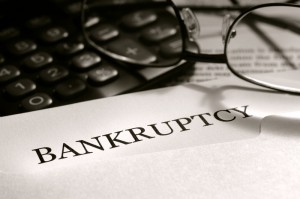 If you file Chapter 13 bankruptcy, eventually you are going to hear the term TRCC. TRCC stands for Trustee’s Recommendation Concerning Claims. This is the part of the bankruptcy case where the Trustee reviews the claims filed in the case to determine who should be paid, who shouldn’t be paid, and whether there is enough funding under the plan to pay all claims. That is a general description but it may help if I give you some background.
If you file Chapter 13 bankruptcy, eventually you are going to hear the term TRCC. TRCC stands for Trustee’s Recommendation Concerning Claims. This is the part of the bankruptcy case where the Trustee reviews the claims filed in the case to determine who should be paid, who shouldn’t be paid, and whether there is enough funding under the plan to pay all claims. That is a general description but it may help if I give you some background.
When a debtor files Chapter 13 they file schedules showing who they owe money and they file a reorganization plan which details how they intend to pay (or not pay) the creditors. Debtors don’t always know how much money they owe to their bill collectors at the time the case is filed. A lot of times they haven’t gotten a statement in quite a while and so when the documents are prepared their attorney uses their client’s best guess of how much is owed to the creditor. Sometimes they guess too low and later on in the case the trustee realizes the plan doesn’t provide enough funding to pay the creditors.
Not all creditors get paid in bankruptcy cases. Simply listing a creditor in the schedules and the Chapter 13 plan does not guarantee that their claim will be paid. Creditors have a duty to file a document call a proof of claim in the bankruptcy courts in order to get paid. This document provides a lot of information including who is owed money, the type of debt, and why the debtor is liable to the creditor. When creditors don’t file a proof of claim their claim doesn’t get paid. Sometimes debtors will file a proof of claim on behalf of a creditor who missed the filing deadline, in order to ensure that they receive payment. However, that is a topic for another article, so stay tuned!
Once the deadline for filing claims has passed, TRCC takes place. At TRCC the trustee reviews the claims that have been filed and decides whether she should object to payment of any claims. The trustee also determines whether the payment schedule in the confirmed plan is sufficient enough to provide funding to the creditors who are supposed to be paid in the plan. If it is then nothing needs to happen. If the plan is insufficient then the trustee will usually do one of two things. First, she may file a motion to modify the plan in order to increase the plan payment. Second, she may notify the debtor’s attorney and tell him to file the motion.
TRCC is also a good opportunity for the debtor’s attorney to take a look at the claims and see if the plan payment can be reduced. Sometimes Chapter 13 plans provide for repayment of large amounts of unsecured debt. When less unsecured claims are filed with the court than are provided for by the confirmed plan, the debtor’s attorney can modify the plan to reduce the payment for the remaining months. The alternative is to leave the plan payment where it is and get out of bankruptcy early.